You are here
Brochures
NASA's Earth Observing System provides a variety of materials available for download. Feel free to choose a category below:
- Brochures
- Postcards
- Posters
- Science Writers’ Guide
- Mission Brochures
- Fact Sheets
- Calendars
- Booklets
- Lithographs
- Reference and Data Products Handbooks
- iBooks
- Activities
 |
2023 NASA Science Support Office Annual Report NASA's Science Support Office represented NASA Science at 30 in-person and/or virtual exhibits from October 1, 2022 through September 30, 2023. With more than 30 years of history and experience, NASA’s Science Support Office has established a well-deserved reputation as the primary point of contact for the Science Mission Directorate and Earth Science Division for science exhibit outreach and product development. The office brings together a unique skill set in “one team” that enables the successful conception, planning, design, and delivery of small- and large-scale exhibit support services. This publication appears in: |
 |
2022 NASA Science Support Office Annual Report NASA's Science Support Office represented NASA Science at 35 in-person and/or virtual exhibits from October 1, 2021 through September 30, 2022. With more than 30 years of history and experience, NASA’s Science Support Office has established a well-deserved reputation as the primary point of contact for the Science Mission Directorate and Earth Science Division for science exhibit outreach and product development. The office brings together a unique skill set in “one team” that enables it to conceptualize, plan, design, and deliver successful small- and large-scale exhibit support services. This publication appears in: |
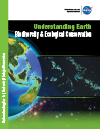 |
Understanding Earth: Biodiversity and Ecological Conservation Biological diversity, or biodiversity, refers to the variety of all life on Earth—on all levels, from genes to species, ecosystems, and biomes. Over the last several decades, however, research has shown that global biodiversity has been on the decline. For decades, satellite and airborne remote sensing instruments have been observing environmental changes that impact biodiversity. This brochure describes how satellite observations—often combined with other measurements taken on the ground or from aircraft—provide information relevant to the distribution of ecosystems and their resident species and how scientists use this information to understand patterns of biodiversity, how biodiversity is changing, the drivers of the changes, and to predict the impacts of environmental changes on biodiversity in the future. This publication appears in: |
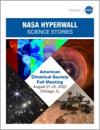 |
American Chemical Society Hyperwall Stories 2022 This brochure represents some of the chemistry-related stories available on NASA’s Hyperwall. For a complete list of Hyperwall stories, and to download content, visit svs.gsfc.nasa.gov/hw. This publication appears in: |
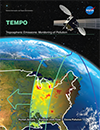 |
TEMPO Mission Brochure What's in the air we breathe? The TEMPO (Tropospheric Emissions: Monitoring Pollution) mission aims to answer this question with more detail and precision than ever before, by creating a revolutionary new dataset of atmospheric chemistry measurements from space. TEMPO will be the first space-based instrument to monitor major air pollutants across the North American continent every daylight hour at high spatial resolution. This publication appears in: |
 |
NASA's Science Support Office 2019 Annual Report NASA's Science Support Office (SCSO) supported 17 domestic and international science conferences and 3 public events in 2019. The SSO continues to provide an inspiring and interactive venue for every event during the year, using a unique storytelling approach that allows a variety of audiences worldwide to connect with NASA Science. The 2019 Annual Report provides an overview of these activities with details about new Hyperwall stories, publications, social media, and more! This publication appears in: |
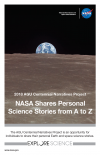 |
2018 Centennial Narratives Project Booklet The AGU Centennial Narratives Project is an opportunity for individuals to share their personal Earth and space science stories. To search the narratives archive, visit: archive.storycorps.org and search keyword NASA Or, visit: https://centennial.agu.org/earth-space-science-history/agu-narratives-library NASA was honored to be part of such a tremendous effort to amplify the accomplishments of science over the last 100 years. This publication appears in: |
 |
How To: Hyperwall Playlist NASA’s Hyperwall is a video wall capable of displaying multiple high-definition data visualizations and/or images simultaneously across an arrangement of screens. Functioning as a key component at many NASA exhibits, the hyperwall is used to help explain phenomena, ideas, or examples of world change. These six steps will help you assemble a Hyperwall playlist, i.e., a list of media files, in chronological order, that you’d like to display on the Hyperwall. This publication appears in: |
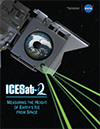 |
ICESat-2 Mission Brochure ICESat-2 will take measurements across the globe and provide an incredibly precise height map of our planet in unprecedented detail. Its focus will be on Earth’s poles, including the Arctic region where temperatures are rising faster than at other latitudes. Read more about how this innovative spacecraft will help scientists check on the health of Earth's frozen regions. This is related to the following mission(s):
This publication appears in:
|
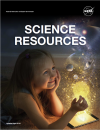 |
Science Resources (April 2018) This booklet contains weblinks to NASA science resources. This publication appears in: |
